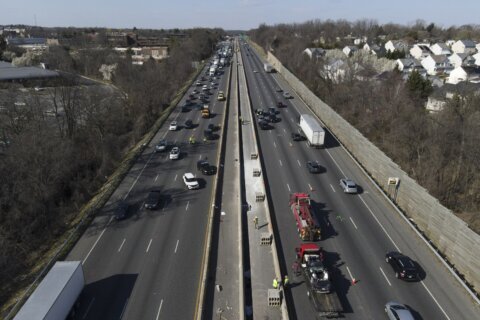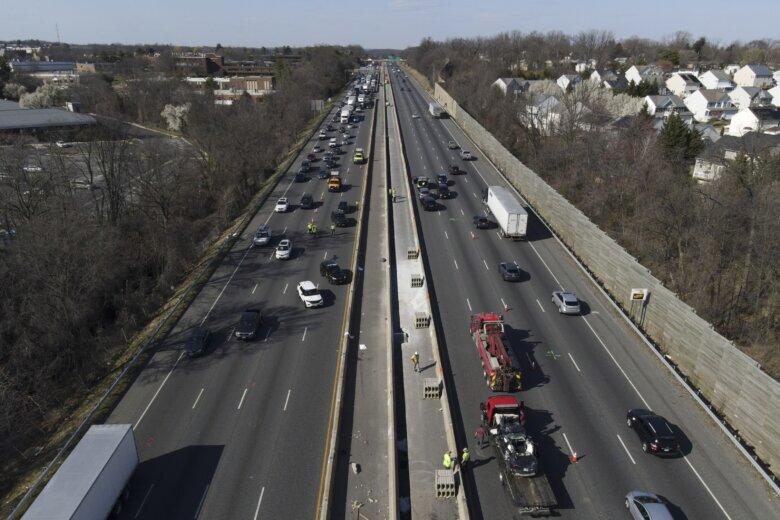
After a crash in March at a work zone on the Baltimore Beltway killed six workers, a list of recommendations for making those sites safer has been released. The recommendations come from a work group that was assembled in the days following the incident.
“For the people who work at these sites, it’s not a matter of if they will see a crash on their job site, it’s a matter of when,” said Maryland Lt. Gov. Aruna Miller, creator of the Work Zone Safety Work Group.
Miller said the group has studied two things — driver behavior and how work zones are operated.
When it comes to behavior, Miller said the group believes more enforcement will help discourage unsafe driving near work sites.
“Recommendations include, but are not limited to, modifying an outdated statute requiring all speed cameras to be manned by an operator, installing a greater number of automated speed cameras at roadway construction sites, [and] increasing the citation amount for speeding near a construction site,” Miller said.
Miller also said more needs to be done in regards to modern technology to not only better set up work zones, but also make workers more visible.
“Our roadway construction workers build and maintain the vital infrastructure that all of us depend on every single day, and they deserve to come home to their loved ones at the end of every day,” Miller said.
The work group also said motorists need to do their part.
“If you’re speeding, you choose to drive even though you’re impaired or you failed to buckle your seat belt — those are deliberate actions that each driver takes. We owe it to the victims and their families. That’s why to us they’re crashes and not accidents,” said Christine Nizer, administrator for the Maryland Department of Transportation Motor Vehicle Administration.
On the education front, recommendations include updating driver’s education curriculum to make it clear to “rookie drivers” why it is important to drive safely in or near a work zone.
She also said the use of Driver Alert System technology, which monitors a driver’s attention to the road, and comes equipped already in some cars, is also being looked at.
Howard Bostic knows the dangers well. He was outside of his truck when his vehicle was hit by a van going seventy miles per hour as he responded to an overturned vehicle as a first responder for the MDOT Coordinated Highways Action Response Team.
“We had van parts come over top of my vehicle, it was hit so hard, and it [the vehicle] moved at least 10 feet from its original position,” Bostic said.
No one was hurt in the crash.
“The crash was scary, and my life flashed before my eyes,” Bostic said.
Teri Soos, deputy administrator for operations at the Maryland State Highway Administration, said recommendations for work zones also include better separating workers from high-speed traffic and, in some cases, detouring high speed traffic around crews.
The state will move toward doing more highway work during daylight hours.
“This may cause some delays, but a few extra minutes is a small price to pay to make sure workers get home in one piece each day,” Soos said.
In addition to releasing recommendations, the state is also asking for the public to take part in a survey on their driving habits. The survey also requests feedback on some of the work group’s recommendations.









